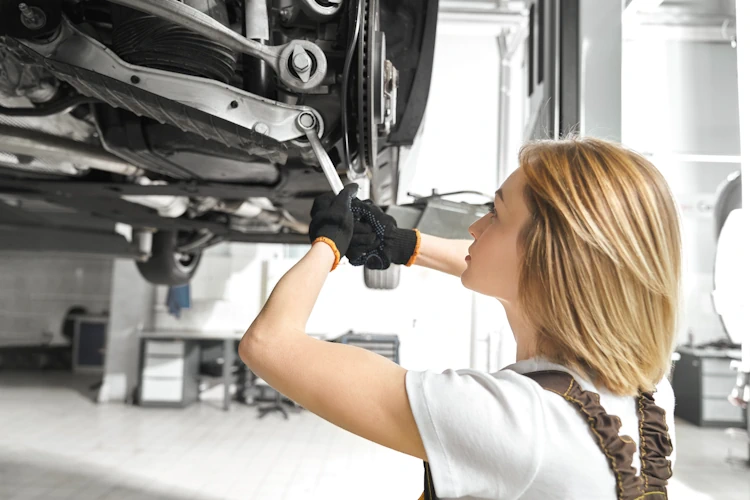Are you a passionate baker with dreams of turning your love for pastries into a successful business venture? Starting a pastry business can be a fulfilling and rewarding endeavor, but it’s essential to navigate the process wisely to ensure your sweet dreams become a reality. In this comprehensive guide, we will walk you through the essential steps and strategies to transform from an amateur baker into a professional pastry business owner.
Finding Your Niche
Identifying Your Signature Pastry
Before you start your pastry business, it’s essential to pinpoint your unique selling point. What makes your pastries stand out? Whether it’s your secret recipe for the perfect croissant or your innovative fusion desserts, identifying your signature pastry will set you apart in a competitive market.
Researching Market Trends
Stay informed about the latest pastry trends. Conduct market research to understand what pastries are in demand and which flavors are capturing the public’s taste buds. Adapting to changing trends will keep your offerings fresh and appealing to a broader audience.
Crafting a Business Plan

Setting Clear Goals and Objectives
Every successful business begins with a well-defined business plan. Outline your goals, both short-term and long-term. Define your target market, pricing strategy, and revenue projections. A clear plan will serve as your roadmap to success.
Budgeting and Financial Planning
Ensure that you have a realistic budget in place. Account for expenses such as rent, equipment, ingredients, and marketing. It’s crucial to have a financial cushion for unexpected costs that may arise during your journey.
Legal and Regulatory Requirements
Registering Your Business
Choose a suitable business structure and register your pastry business legally. This step is essential for tax purposes and to protect your personal assets.
Obtaining Permits and Licenses
Comply with local health and safety regulations. Obtain the necessary permits and licenses to operate a food business in your area.
Setting Up Your Pastry Kitchen
Choosing the Right Location
Selecting the right location for your pastry kitchen is crucial. Consider factors such as foot traffic, accessibility, and proximity to suppliers.
Equipment and Supplies
Invest in high-quality equipment and reliable suppliers. Your kitchen tools and ingredients are the backbone of your pastry creations.
Sourcing Quality Ingredients
Building Supplier Relationships
Establish strong relationships with your ingredient suppliers. Consistency in the quality of your ingredients is essential for delivering exceptional pastries.
Ensuring Consistency in Quality
Maintain strict quality control standards to ensure that every pastry leaving your kitchen meets your high standards. Consistency builds trust with your customers.
Menu Development
Diversifying Your Pastry Selection
Offer a diverse range of pastries to cater to different tastes. Include classics and unique creations in your menu to appeal to a broader customer base.
Pricing Strategies
Set competitive prices that reflect the quality of your pastries and cover your expenses. Be transparent about your pricing to build trust with customers.
Branding and Marketing
Creating a Memorable Brand
Invest in branding that reflects your pastry business’s identity. A strong brand helps customers recognize and remember your business.
Online and Offline Promotion
Utilize both online and offline marketing strategies. Establish a professional website, use social media platforms, and engage in local events and promotions.
Customer Service Excellence
Building a Loyal Customer Base
Offer exceptional customer service to build a loyal customer base. A happy customer is more likely to become a repeat customer and recommend your pastries to others.
Handling Feedback and Complaints
Take feedback seriously and use it to improve your offerings. Address customer complaints promptly and professionally.
Staffing Your Business
Hiring and Training Employees
Hire skilled and passionate staff who share your commitment to quality. Provide thorough training to ensure consistency in pastry production.
Managing Staff Productivity
Monitor and manage staff productivity to maintain efficiency in your kitchen and deliver on customer expectations.
Financial Management
Bookkeeping and Accounting
Maintain accurate financial records and regularly review your financial performance. This data will help you make informed business decisions.
Profitability Analysis
Analyze your profitability regularly to identify areas for improvement and growth opportunities.
Scaling Your Business
Expanding Your Product Line
Consider expanding your product line to introduce new pastries and attract a broader customer base.
Opening Multiple Locations
If your pastry business thrives, explore the possibility of opening additional locations to reach a wider audience.
Staying Creative and Innovative
Experimenting with New Recipes
Don’t be afraid to experiment with new pastry recipes. Innovation keeps your menu exciting and encourages customer loyalty.
Keeping Up with Trends
Stay updated with the latest pastry trends and incorporate them into your offerings to stay relevant in the industry.
Networking and Collaboration
Partnering with Other Businesses
Collaborate with other local businesses to cross-promote and expand your customer reach.
Participating in Food Events
Participate in food festivals and events to showcase your pastries and connect with food enthusiasts.
Handling Challenges and Setbacks
Problem-Solving Skills
Develop strong problem-solving skills to overcome challenges that may arise in your pastry business journey.
Resilience in the Pastry Industry
The pastry industry can be competitive and challenging. Stay resilient and adapt to changing circumstances to thrive in the long run.
Conclusion
Embarking on the journey from amateur baker to successful pastry business owner is an exciting endeavor. By following these tips and strategies, you can build a thriving business that satisfies the sweet cravings of your customers while fulfilling your entrepreneurial dreams.
FAQs
- How much capital do I need to start a pastry business?
- The required capital can vary widely depending on factors like location, equipment, and scale. A well-detailed business plan will help you estimate your specific needs.
- What are the most popular pastry trends in the industry right now?
- Pastry trends can change rapidly, but currently, artisanal and gluten-free pastries, as well as unique flavor combinations, are gaining popularity.
- How can I find reliable ingredient suppliers for my pastry business?
- Networking within the culinary community and attending industry events can help you connect with trustworthy suppliers.
- Is it necessary to attend culinary school to start a pastry business?
- While culinary education can be beneficial, it’s not a strict requirement. Practical experience and a passion for pastries can also lead to success.
- What should I do if I face a shortage of skilled pastry chefs?
- Consider offering training programs to develop your own talent or explore hiring from culinary schools or apprenticeship programs.
Starting your pastry business is an exciting journey filled with opportunities for growth and creativity. With dedication, a solid plan, and a passion for pastries, you can turn your dream into a flourishing reality.




